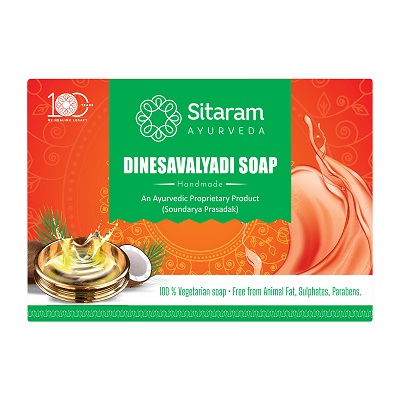Description
The roots, stalk, flowers, seeds and seed pods of the Indian lotus are revered by the Ayurvedic system of healing for its capacity to improve brain health and function. Aravindasavam, a potent brain tonic, contains ‘Aravinda’ or Nelumbo nucifera as its main ingredient.
Asavas are mildly alcoholic preparations. The sweet taste makes it palatable to kids and adults alike. The alcohol base makes it quick-acting and efficient. Aravindasavam is a holistic recipe for pediatric help and well-being.
Key ingredients of Aravindasavam-
GUDA
Jaggery is known to produce heat and provides instant energy to the human body. It prevents constipation due to its laxative property and activates digestive enzymes. As per Ayurveda, eating Jaggery daily after meals improves digestion due to its Ushna (hot) property.
PADMAKA (Nelumbo nucifera)
The extracts obtained from the lotus flower effectively help in reducing pain and inflammation. It treats bleeding disorder, asthma, and cough and cold symptoms. The cold nature helps in reducing the ailments related to the skin.
RAMACHAM (Vetivera zizanioides)
The potent antiseptic properties of vetiver calms the mind and balances hormonal disorders. It improves circulation and treats underlying skin conditions.
GAMBARI (Gmelina arborea)
One of the Dashamoola roots, it effectively reduces inflammation and improves wound healing. The potent antioxidant properties help in cleansing the blood and removing dullness of skin and wrinkles.
MANJISHTA (Rubia Cordifolia)
Manjishtha or Indian Madder is considered to be one of the best blood-purifying herbs. It is mainly used to break down blockages in the blood flow and remove stagnant blood. Manjishtha herb can be used both internally and externally on skin for promoting skin whitening. It helps manage acne and pimples by inhibiting the growth of acne-causing bacteria due to its antioxidant property.
ELA (Elettaria cardomum)
Commonly used as Elaichi, Ela has a very good antibacterial and antifungal properties. It helps in reducing inflammation. Cardamom is often given the epithet ‘Queen of Spices’ as it is used to flavor food in many countries. In addition, the herb has several health benefits. The German Commission E has indicated the use of Cardamom in dyspepsia and as a cholagogue, which promotes bile discharge from the system. The herb is also helpful in treating gum and teeth infections, throat congestion and kidney disorders.
BALA (Sida cordifolia Linn)
The Ayurvedic system of medicine considers Bala or Sida cordifolia as a tonic, astringent, emollient, and aphrodisiac. The drug also forms a chief ingredient of several important formulations and preparations in Ayurveda. Internally, Bala is believed to be a very effective nervine tonic and Rasayana for all kinds of Vata disorders.
JATAMANSI (Nardostacys jatamansi )
It has a very good antioxidant and anti-inflammatory property that helps to reduce premature hair graying and hair growth. The therapeutic benefits of Musk Root have been documented in various Ayurvedic texts. The herb is recommended for combating stress and insomnia. It is also known to enhance memory and treat mental instability. Cardiotonic properties have also been attributed to Musk Root.
MUSTA (Cyperus rotundus)
Musta is commonly known as common Nutsedge. It is effective in gastritis and irritable bowel syndrome. Due to its breast purification property, it is used during postpartum care to avoid indigestion to the child. Nut Grass has a long history of medicinal use in the Ayurvedic system of medicine. Its benefits have been documented in the Charaka Samhita, one of Ayurveda’s prime texts. The herb also features heavily in the medicinal texts of Chinese Traditional Medicine (CTM). In CTM, Nut Grass is credited with the ability to restore ‘Qi’, the natural patterns in which the body functions.
SARIVA (Hemidesmus indicus)
Sariva is a semi-erect herb that has various phytoconstituents. These compounds add medicinal value to the herb. Sariva has been used in the Ayurvedic system of medicine for many years. It is used in the treatment of conditions like skin disorders, diarrhea, dysentery, eye diseases, syphilis, leukoderma, dyspepsia, chronic fever, leprosy, asthma, and others.
VIBHITHAKI (Terminalia Bellerica)
Known as Beach almonds or Bedda nut tree, it is rich in Vitamin C and other antioxidants that nourish the hair roots. Vibhitaki helps in making the roots of the hair stronger, minimizing hair fall and preventing premature graying of hair strands.
VACHA (Acorus calamus Linn)
It is a traditional Indian medicinal herb, which is practiced to treat a wide range of health ailments, including neurological, gastrointestinal, respiratory, metabolic, kidney, and liver disorders. The root (rhizome) is used to make medicine. Despite safety concerns, calamus is used for gastrointestinal (GI) problems including ulcers, inflammation of the stomach lining (gastritis), intestinal gas (flatulence), upset stomach and loss of appetite (anorexia).
AMALAKI (Embilica officinalis)
The benefits of Amalaki are numerous, which is part of why it is considered to be the best antiaging ingredient in all of Ayurveda. It is useful for metabolism, elimination and normal liver function. It is excellent for the hair and skin. The fruit is an important source of Vitamin C, minerals and amino acids. It contains three times the protein concentration and Vitamin C (ascorbic acid) concentration than apple.
TRIVRIT (Operculina turpethum)
It is commonly known as turpeth. It is useful for easy purgation. Trivrit can be considered the best owing to its properties like strength, piercing and pungent nature. It is thus very useful in losing bodyweight. It is useful to get relief from worm infestation, constipation and healing infected wounds. Paste of Trivrit is consumed in the early morning for purgation.
PATOLA (Trichosanthes dioca)
Acharya Charaka has mentioned Patola as one of the herbs used in powder massage, useful in pruritus, acne and urticaria. Leaves and fruits of Patola s used in the treatment of alcoholism and jaundice. Soup of Patola fruit is also advisable in alcoholism. The Patola leaves juice is used in alopecia and liver enlargement. Regular eating of Patola vegetable helps to lose weight, increases the immune power and also provide relief from abdominal diseases. Patola root is Sukha Virechaka that causes mild purgation.
DHATAKI (Woodfordia fruticosa)
It is the flower of Dhataki that has significant importance in traditional Indian medicine. According to Ayurveda, Dhataki is considered beneficial for female disorders such as menorrhagia (heavy menstrual bleeding) and leucorrhea (white discharge from the vagina) due to its Kashaya (astringent) property. Dhataki is beneficial for skin problems (such as acne, pimples etc.) and might assist in wound healing due to its antimicrobial and anti-inflammatory properties. Applying a paste of Dhataki powder along with honey or water on the skin helps in reducing swelling and steps up wound healing due to its Ropan (healing) and Sita (cold) properties.


 Sign In
Sign In Cart
Cart 










Reviews
There are no reviews yet.